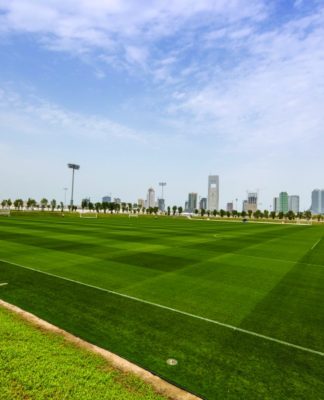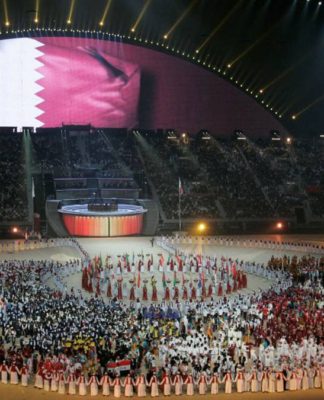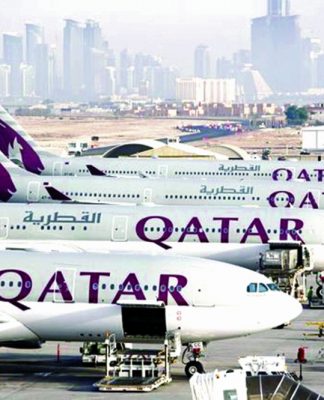Refugee photographers fight to raise awareness about plight of Rohingya in Bangladesh
A number of talented photographers who are also residents of the world’s largest refugee camp in Cox’s Bazar, in southeastern Bangladesh are using their art to raise awareness about the plight of their people, the Rohingya. They are currently trying to raise awareness about malnutrition in the camps – a result of stricter rationing as the World Food Programme has lost resources.
Issued on: 11/08/2023 – 14:27
3 min
The faces of two Rohingya children through the tarpaulin roof of a makeshift shelter in the camp.
The faces of two Rohingya children through the tarpaulin roof of a makeshift shelter in the camp. © Instagram/@ziahero
Text by:
Thaïs Chaigne
A number of photographers living and working in the refugee camps in Cox’s Bazaar, Bangladesh – they, themselves refugees – document daily life there, posting images on social media every day.
The photos show glimpses of everyday life in the largest refugee camp in the world – a soccer game played between two makeshift shelters, residents getting together to chat about the news or two children peeking out from a window in their home made of tarp.
Children play football.
Children play football. © Ro Yassin Abdumonab
More than a million Rohingya have fled persecution in their homeland, Myanmar, since 1990. The vast majority of these refugees left Myanmar after a brutal crackdown by the Burmese Army that took place in 2017. Around 900,000 Rohingyas now live in Cox’s Bazar, a town near the border with Myanmar that now contains the largest refugee camp in the world.
Many children and young adults were born in Cox’s Bazaar and have spent their entire lives in these overcrowded camps, regularly torn apart by floods, fires and epidemics.
Voir cette publication sur Instagram
Une publication partagée par Ro Yassin Abdumonab (@ro_yassin_abdumonab)
‘Through my photography, I am raising my voice for my community’
Ro Yassin Abdumonab is a Rohingya refugee. He began taking photos with his smartphone in October 2017, just a few months after he arrived in Cox’s Bazaar after fleeing the crackdown. These days, he has a camera that he uses.
These photos give you an idea of our lives here in Bangladesh. There are so many traumatised people, and in the camps everyone has their own story to tell.
I document Rohingya culture, the general lives of Rohingya refugees in the camp, as well as climate change, disaster and other issues faced by Rohingya people in the camp.
Voir cette publication sur Instagram
Une publication partagée par Ro Yassin Abdumonab (@ro_yassin_abdumonab)
This photo was taken during a large fire in the camp on March 5, 2023.
Voir cette publication sur Instagram
Une publication partagée par Ro Yassin Abdumonab (@ro_yassin_abdumonab)
A child washes himself during a storm.
Vidéo de réfugiés Rohingyas âgés qui se réunissent pour discuter d’actualité.
I think it’s good that now Rohingya are telling their own stories. If there is no one else, then we have to tell the stories, because if we don’t, then these people will be forgotten.
Through my photography, I am raising my voice for my community and I am very sure that my photography will bring changes in my community.
Voir cette publication sur Instagram
Une publication partagée par Ro Yassin Abdumonab (@ro_yassin_abdumonab)
Un enfant rohingya qui étudie .
‘As photographers, we have a responsibility to tell the story of our people.’
Sahat Zia Hero also began taking photos of life in the camp with his smartphone back when he arrived there as a refugee in 2017.
Hero teamed up with the UNHCR and Spanish artist David Palazon, who runs the Rohingya Cultural Memory Centre of the International Organization for Migration (IOM) in Cox’s Bazar, to create a magazine called “Rohingyatographer” that showcases the work of refugee photographers who, like Hero and Abdumonab, document their people’s daily lives.
Voir cette publication sur Instagram
Une publication partagée par Sahat Zia Hero (@ziahero)
The first issue of the magazine was published in 2021. Since then, a number of organisations have sponsored it, including the UNHCR and the Spanish Embassy.
My aim is to raise awareness in order to share our sadness and happiness so that people around us can see us, our life and our history.
In addition to the magazine, we organise photography workshops where we teach beginners things like composition and framing.
Voir cette publication sur Instagram
Une publication partagée par Sahat Zia Hero (@ziahero)
Voir cette publication sur Instagram
Une publication partagée par Sahat Zia Hero (@ziahero)
Hero decided to make food, a particularly timely topic, a central theme of the next edition of “Rohingyatographer”. Short on resources, the UN body the World Food Programme recently had to reduce ration tickets for camp residents.
In March, the amount of money in food tickets given to residents per person per month dropped from 12 dollars (10.92 euros) to 10 dollars (9.10 euros). Then, in June, it dropped again, this time to eight dollars (7.28 euros). That means that people are getting about 23 cents to spend on food per day.
We’re facing a food crisis and our situation is dire. It’s really important to preserve our food culture through this collective magazine, to show how we eat and how food is important for us and our children.
These photos show how the daily rations of residents of the refugee camps have decreased since the food tickets have dropped in value.
We are already losing our food culture in the refugee camps. Due to the displacement, we already can’t eat our Rohingya food. Most of it is not available or we can’t buy it. We mainly have just rice and water.
This image shows a man carrying his family’s dinner on his head. The leafy greens cost him 20 Taka, or 17 cents.
Voir cette publication sur Instagram
Une publication partagée par Ro Yassin Abdumonab (@ro_yassin_abdumonab)
A child holds up “eisihak”, a kind of spinach that is a traditional Rohingya ingredient hard to find in the camps.
We feel like the world is forgetting us, so we think it’s our responsibility to keep raising our voices to tell our history to people.






























